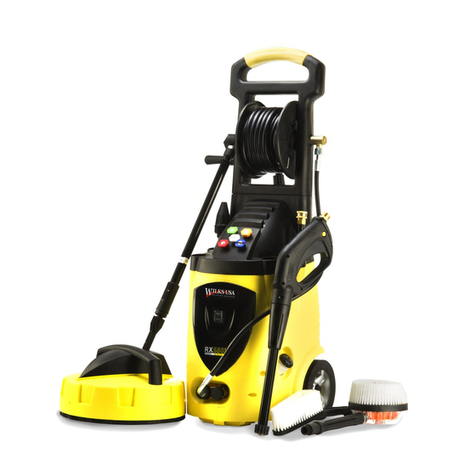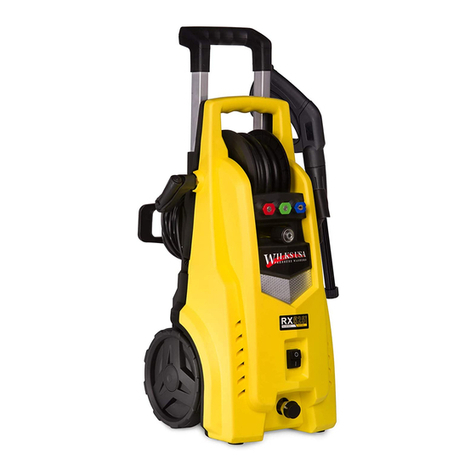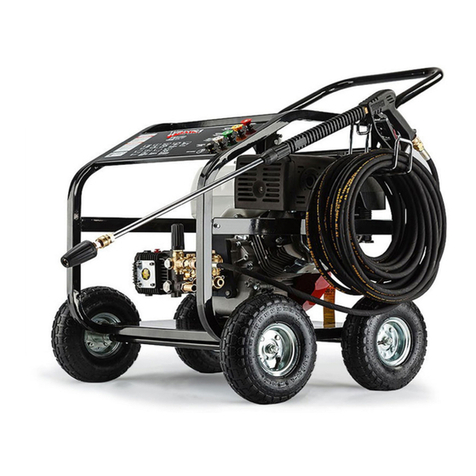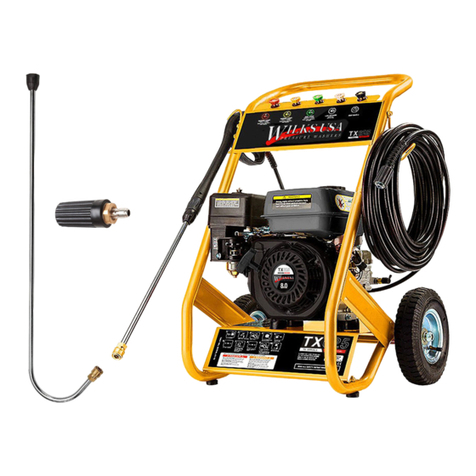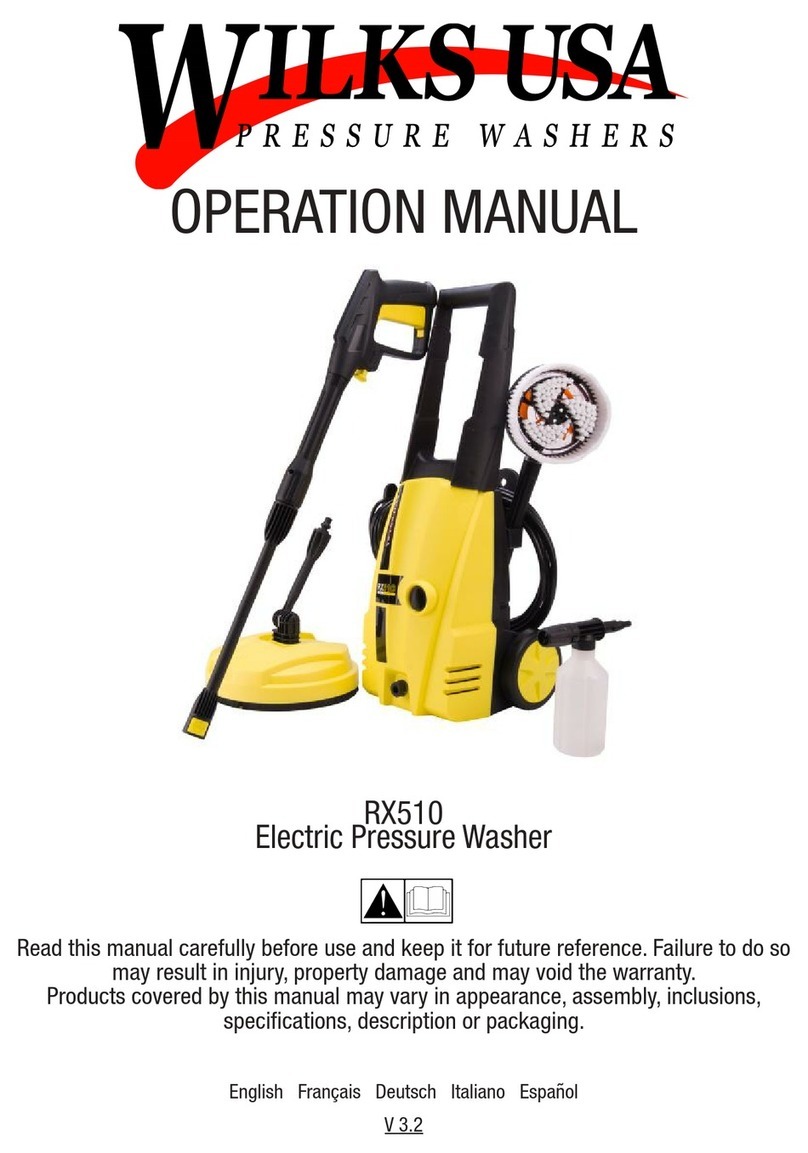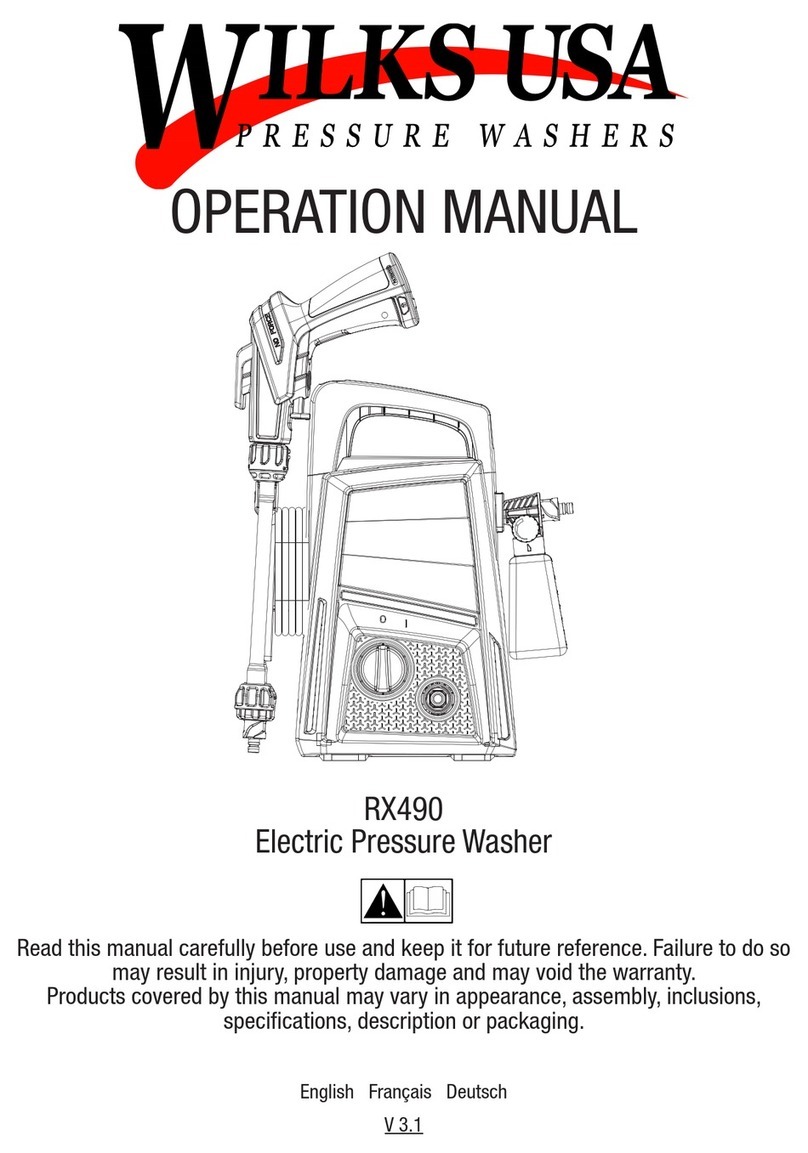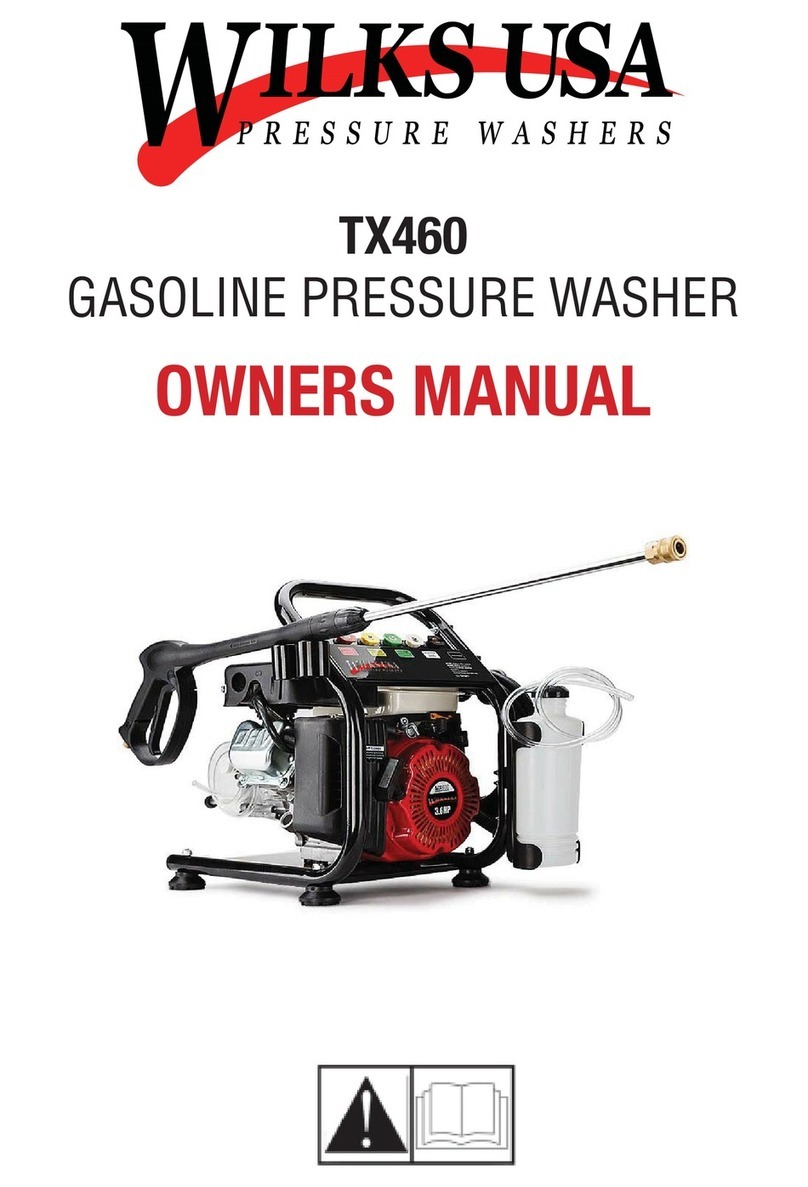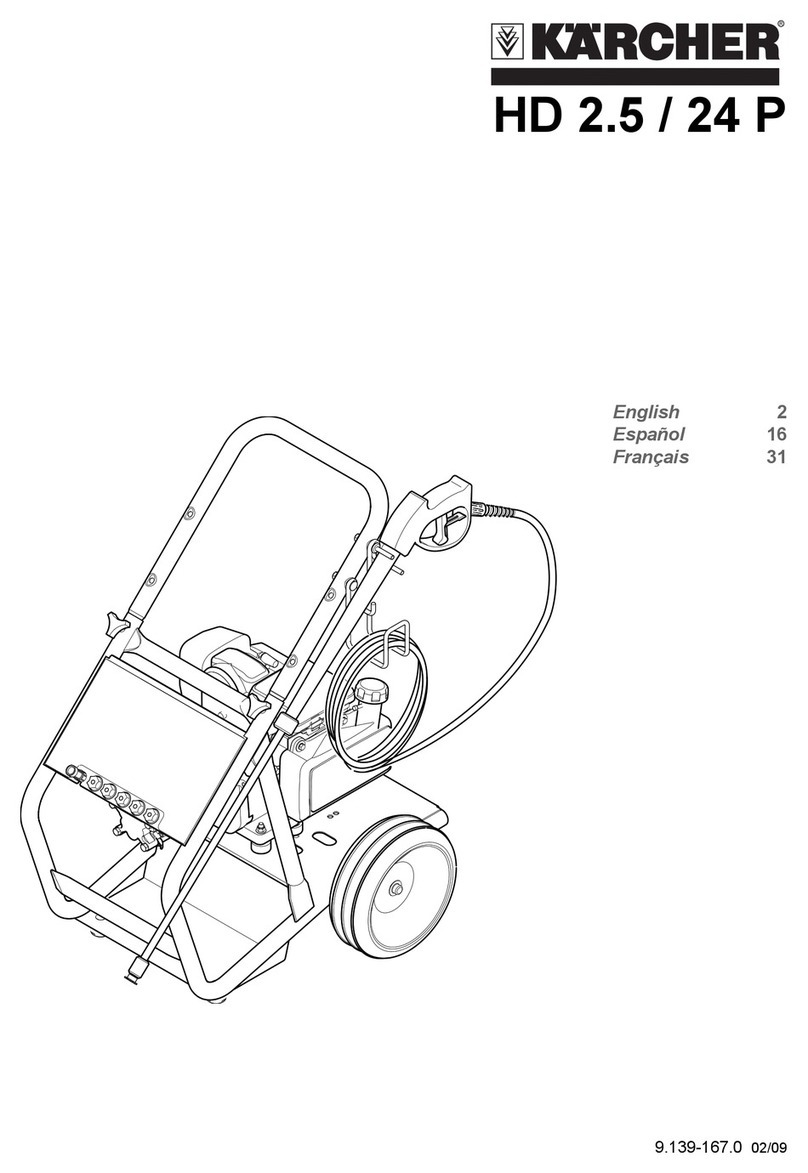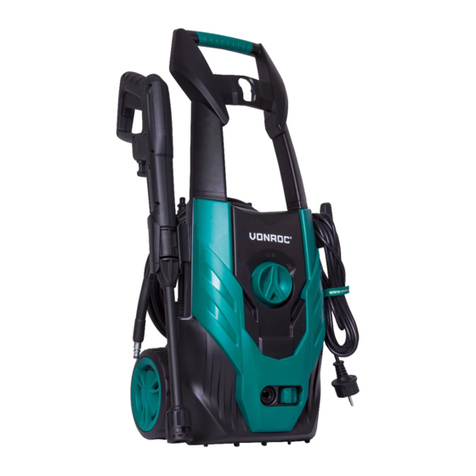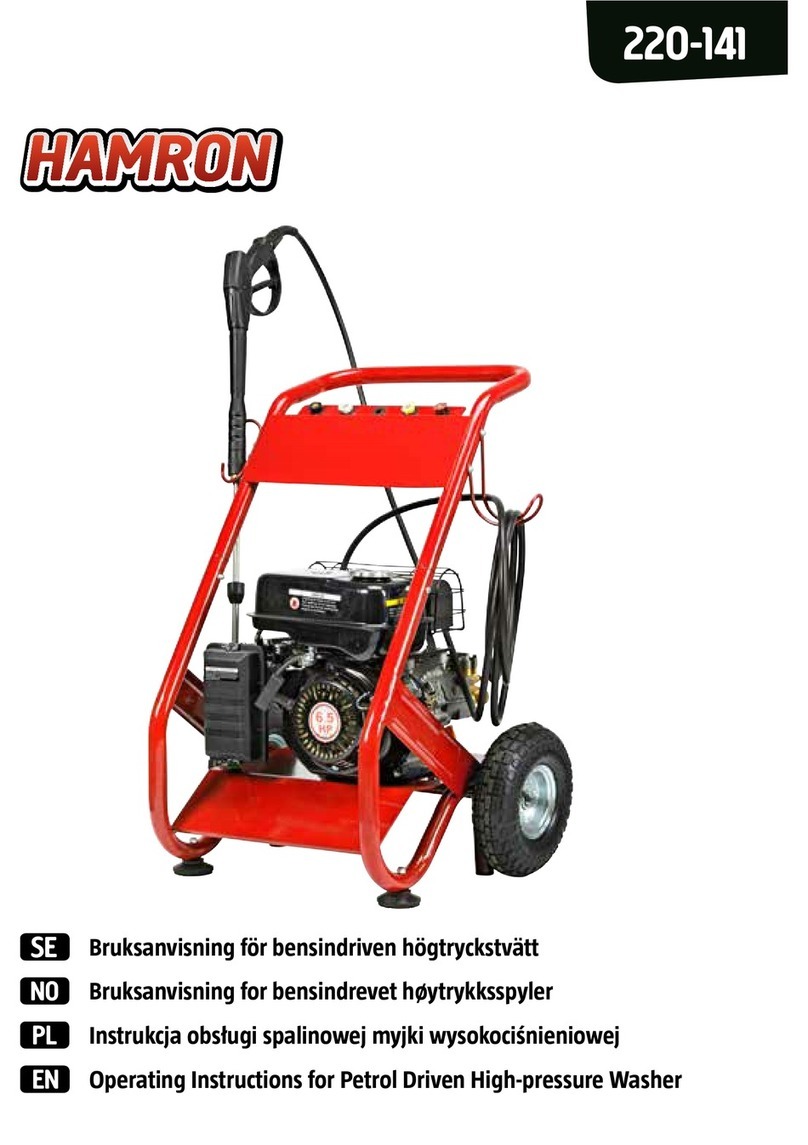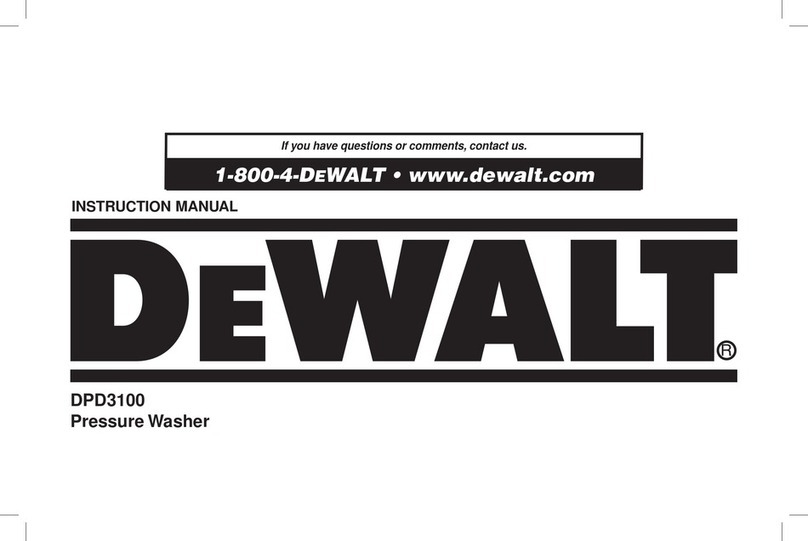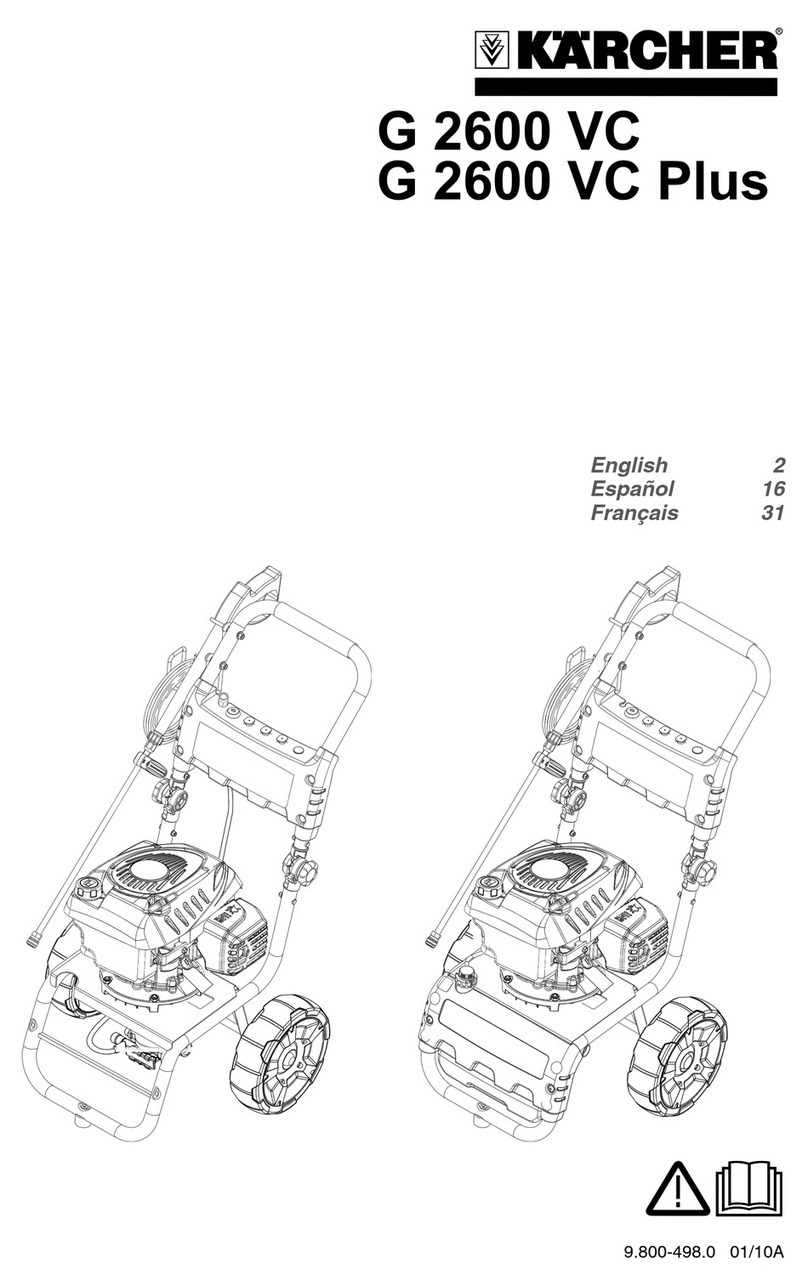
RX545i
© Wilks-USA
10 © Wilks-USA
English
Operation
The following cleaning procedure will ensure that
you achieve the most benecial results in the
shortest amount of time.
01. Surface preparation
Clear the working area and make sure that all
windows and doors are closed tightly. Make sure
that all plants and trees adjacent to the cleaning
area are protected by a drop cloth.
02. Initial high pressure rinse
The next step is to spray the cleaning surface
with water to clear off any dirt or grime that may
have collected on the surface. This will allow your
detergent to attack the dirt that has worked its
way into the cleaning surface. Before triggering
the gun, adjust the nozzle to a wide spray pattern
and slowly adjust to the desired spray pattern.
This will help you avoid applying too much
pressure to the surface that could cause damage.
03. Detergent application
Only use detergents formulated for pressure
washers. Test the detergent in an inconspicuous
area before use.
Follow the manufacturer’s directions for mixing
the correct concentrations of detergent to water.
• Apply the detergent so it thoroughly covers
the cleaning surface. Apply from bottom to
top to prevent the detergent from sliding
down and streaking.
• Allow the detergent to remain on the
surface for a few minutes. This is a good
time to use a brush to lightly scrub heavily
soiled areas. Never allow detergent to dry
on the cleaning surface.
• Remove detergent applicator from gun and
replace with the lance.
• Rinse detergent from surface.
• Rinse the detergent applicator with clean
water following each use.
04. Final rinse
Make sure you thoroughly rinse the surface and
that all detergent has been removed.
05. Shut down
• Make sure all detergent is flushed from the
system.
• Turn off the motor.
• Turn off the water supply.
• Trigger the gun to de-pressurise the
system.
• After each use, wipe all surfaces of the
pressure washer with a clean, damp cloth.
Looking After your Product
• This pressure washer is not meant to pump
hot water. Never connect to a hot water
supply.
• Never operate the unit for more than one
minute without spraying water. This will
cause a heat build-up that can damage the
pump.
• Only use the nozzles supplied with the
machine.
• Never store the pressure washer outdoors
or where it could freeze. The pump will be
seriously damaged. Any components with
water left inside will also be damaged, e.g.
the pressure gun.
• Release the trigger when changing the
spray pattern. Failure to do so could result
in damage.
• Do not operate the pressure washer with
the inlet water screen removed. Be sure
to keep the screen clear of debris and
sediment.
• Make sure you clean the machine every
three months and inspect the filter and the
nozzle prior to every use, ensuring there is
no debris that may impair use.

